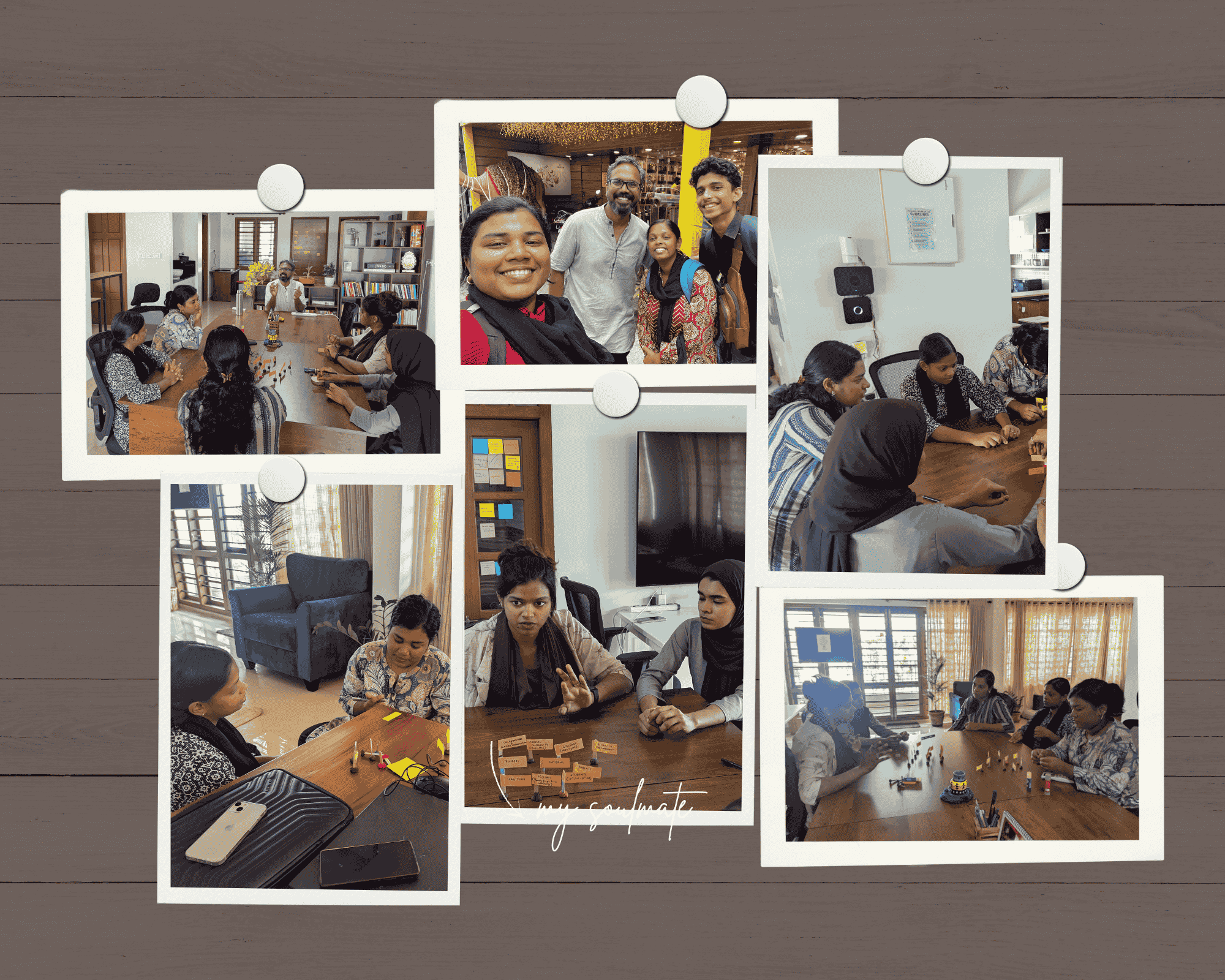A life lived singing about love and humanity. A community that is identified by its dissent from heteronormative, patriarchal, and orthodox religions. A bunch of people armed with ektaras and dotaras, singing their way out of inequity. My attempt to trap the tales of Bengal’s Bauls in a short essay definitely seems ambitious.
As the aikyam team sits down for a video chat with Sumanta Das Baul and his family, Shilanjani translates the conversation earnestly. Thus, a trio of Bauls, a Netherlands and Germany-based academic who has inextricable links with them, and a couple of curious students go back and forth between English and Bengali for over two hours. Perhaps an ode to the Baul culture of unifying diverse sections of society, I imagine.
When did it begin? Where are they now?
Well, there is no definite answer to the first question. The word ‘Baul’ has appeared in Bengali texts no less than centuries old. The tradition is intertwined with Bengal’s culture and has inspired literati, including Rabindranath Tagore. Traditionally, the Bauls would go from house to house, singing. From these houses, they would receive rice or whatever was offered to them.
The community is based in an ashram situated near the famed Shantiniketan, in the district of Birbhum in West Bengal. The natural surroundings of the ashram spell a freedom that is vital to the Baul philosophy. Rarh Bangla’s mountains, valleys, and red alluvial soil greatly influence Baul music.

The walls of political, religious, and ideological extremities come toppling down before the universal humanity of the Bauls. They derive liberally from Sufism, Vaishnavism, Hinduism, and Buddhism, creating a space where the philosophies coexist in harmony. This seamless harmony extends to political borders as well. The Baul tradition is equally vibrant and thriving in rural Bangladesh. Everyone is welcome to join the Bauls; the status of being a Baul is neither ascribed at birth nor denied to anyone.
The very existence of a Baul is a protest against inequities sprouting from caste, gender, creed, class, and ethnicity. In defiance of patriarchal and heteronormative settings, Radha is considered the female ideal or the Supreme in Baul ideology. They believe that violence in society can be diminished if men appreciate and imbibe femininity. All men within the tradition embrace femininity by growing their hair out and wearing jewellery. Gender fluidity is encouraged among the Bauls. Unsurprisingly, they are intrinsically political, and their songs often contain political references. Their songs also brim with sports metaphors, usually football, and esoteric allusions to spiritual thought.
Their strong ties with nature come out in their music, and in the way they approach modern-day evils like climate change. “Human beings who nurture themselves and each other will nurture nature. Our songs strive to inspire people to be their authentic, divine selves. One who sincerely seeks the moner manush will preserve nature too,” he says.
The Baul life
What pops up in the mind upon hearing of a spiritual community living a deviant lifestyle? A cluster of saints meditating in faraway caves and hills. Long, tangled beards and unkempt hair. Well, one wouldn’t find a Baul atop a hill or tucked away in a cave, after renouncing society. Why? One, the Bauls believe that divinity resides in every human being. They also aspire to cultivate the ‘ideal human-divine’ or moner manush through their actions or karma. This is realised by overcoming the six sins of pride, covetousness, lust, envy, gluttony, and anger. And here’s the pièce de résistance: the sins can be overcome only by experiencing them.
Everything about the Bauls testify to their philosophy, and the structure of the ashram is no exception. The ashram has been built to include numerous circular spaces where people can sit facing each other to sing. The community shuns a strict hierarchy, and rigid regulation is alien to the Bauls. When they’re not at the ashram, one can find them... anywhere. The Bauls go where their music takes them.
Baul music boldly barges through every human-made fence. It is incomplete without instruments. The ektara (yes, the same one from that song in Wake Up Sid) or the single-stringed instrument made from bottle gourd was the earliest instrument chosen by the Bauls. Other instruments include dotara (double-stringed instrument made from sheep or goat skin), khomok (tension drum), dubki (percussion), kartal (cymbals), and khol (similar to a mridangam and made from mud). The tabla and the flute, although not traditional Baul instruments, are also played.
“The Bauls embrace modernity to the extent that it allows us to better proliferate our preaching. We bought a car to travel to faraway places and spread our message. While we do not indulge in mindless consumption, we understand it is important to be in touch with the changing reality. We live in close harmony with society and nature and sing about contemporary issues,” says Sumanta da.
In recent years, Baul music has been appropriated by modern bands, commercialised and packaged into quick entertainment. Instruments are given more importance than the song itself, and the songs are replaced with excerpts that do not do justice to the message. The last stanza of Baul songs contains the poet’s name, and the songs are incomplete without it. The distinction between a Baul artist and a Baul spiritual practitioner becomes relevant here. Everyone who merely sings Baul songs is not a Baul. Being a Baul is a matter of spiritual practice.
The Bauls sing about the life they envision for themselves and the world. One that places social equity front and centre, and can flourish only if nature thrives alongside as well. Baul music serves as both a balm and a muse, telling the stories a burning world needs to hear.





